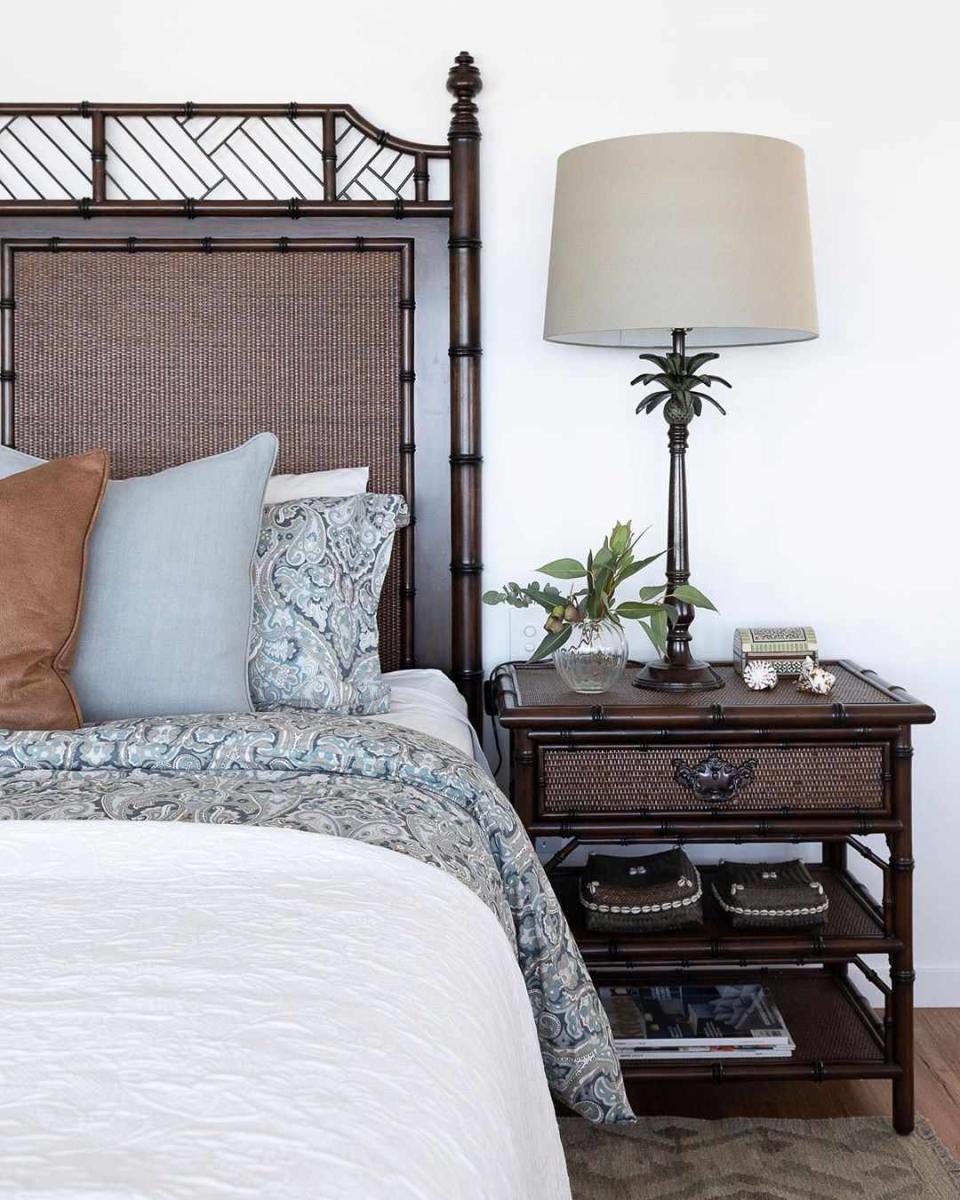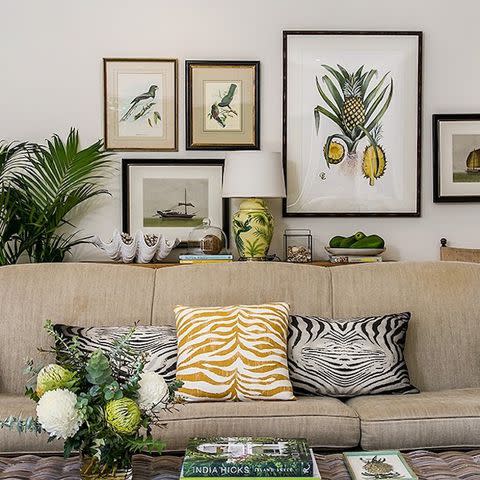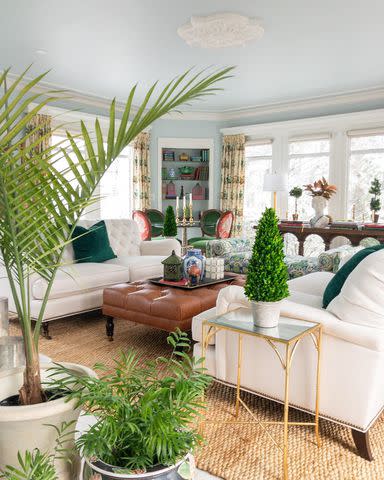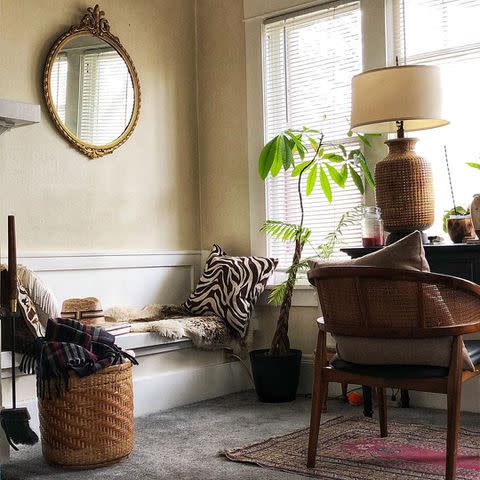What Is British Colonial Style?
Key Features and How to Incorporate British Colonial Style at Home

@pophaminteriors / Instagram
Fact checked by Jessica Wrubel
British colonial style is a breezy yet old-world, well-traveled style featuring linen, rattan, bamboo, and botanical prints combined with dark-stained wood and tropical plants.
While colonizing Asia, the Caribbean, and Africa, the British Empire gained distinct influences from the vastly different habitats, climates, and cultures they crossed, incorporating many elements and ultimately developing a definitive decor style.

@geninenoakesdesign / Instagram
History of British Colonial Style
At its height from the 16th to 18th centuries, the British Empire was the largest empire of its time. Its territory stretched from Africa to India to the Caribbean as Britain imported then-novel commodities like tea and rubber, making itself one of the leading powers of the time.
While it’s easy to get caught up in the era’s sense of globetrotting adventure, it’s also important to remember that the history of colonialism wasn’t pretty. To the British crown, the lands it colonized were merely sources of raw material for trade and shipping, and it was willing to violently subjugate (or enslave) native people in the pursuit of wealth and power.
It’s important to remember those things when discussing one aspect of the period that is still celebrated: the emergence of classic British colonial decor. With its eclectic approach and careful interplay of soft, airy tones and dark accents, the reigning style of the time remains popular today. It’s also less stuffy (and more versatile).
Key Features of British Colonial Decor
In its heyday, British colonial decor combined pared-back aspects of Victorian design with details drawn from local materials and traditions. British colonial decor represents a marriage of traditional (but then-modern) approaches from the Western world with stylistic elements borrowed from the colonized nations.

@acquired_by_andrea / Instagram
Colors and Textures
British colonial design creates visual interest by its contrasts in colors and texture. You can expect whitewashed walls and billowing, sheer fabrics contrasted with dark-stained native teak or mahogany. Other popular colors include soft cream, light gray, tan, brown, walnut, copper, and burnt umber.
Consider adding a splash of color and texture with botanical and tropical bird prints, paisleys, batiks, and animal prints.
Window Treatments
In these spaces, the decor tends to be airy and light, with billowy, sheer curtain fabrics, rattan blinds, and timber plantation-style shutters designed to provide a cooling atmosphere in what were usually hot, tropical climates.
Plants and Greenery
Tropical plants like palms, ferns, and other natural elements reflected a fascination with local plant life. In British colonial style, the plants featured are a far cry from English tea gardens, instead the design style centers around tropical flowers like orchids and hibiscus.
Furniture
British colonial-style interiors feature furniture made from bamboo, natural cane, coconut husk, and rich brown rattan.
Types of furniture that define this style are portable furniture designed to be packed up and traveled long distances, much like the British military, who moved around during their conquests. Signature furniture includes a chest of drawers, foldable chairs, collapsible writing tables, and vintage luggage. Ceiling fans made of timber, rattan, and grasses are integral in this design aesthetic.
Artwork and Decor
The influence of Asian, Caribbean, and African design is a part of eclectic fabrics, distinctive prints, and unique accessories collected from world travel.
Popular accessories include indigenous decor like coral, shells, and wood carvings. These items were comingled with classic English decor like china, crystal, and silver. Other decorative features involved old-world traveling instruments, like globes, maps, and telescopes.
How to Incorporate British Colonial Decor

@dawnpdx / Instagram
The core element of British colonial decor is the contrast of light and dark tones. Consider using soft white paint for walls and outfitting windows with light, sheer fabrics for that feeling of a cool oasis in a tropical setting. You can match the contrasting look of the era’s dark timber floors by using a stain on yours and adding other wood accents like plantation shutters or a classic four-poster bed.
This style of decor also offers plenty of opportunities to show off your favorite art pieces and knick-knacks acquired during trips abroad—these add visual interest while staying true to the well-traveled aesthetic of the time. Repurpose items like vintage trunks and suitcases to add to the mood of breezy adventure.
The current trend of using botanical prints and greenery also plays well with a classic British colonial approach. In British colonial design, everything old truly is new again. These contemporary touches wouldn’t have been out of place during the original colonial era. They can also contribute to that light-dark interplay that defines the style’s color palette.
Why the History of British Colonial Decor Matters
There’s nothing wrong with decorating your home in a British colonial style. It’s a beautiful aesthetic that’s held up to this day for a reason. But if you adopt it as your own, it’s essential to acknowledge the historical reality behind how it came about in the first place.
The British Empire was no benign ruler over the lands in its control. It took power by force and violently subjugated most attempts to resist. In the 1870s, India lost over five million to famine under British rule—even as the country exported grains crucial to its food supply to the rest of the world. In Kenya, up to 1.5 million of the Kikuyu ethnic group were detained in concentration camps after staging a political uprising against colonial rule.
That’s just a tiny taste of what British imperialism meant for those being colonized. But in the same way that we can appreciate works of art created during history’s darkest periods, we can recognize the beauty of the era’s signature aesthetic.
Read the original article on The Spruce.

